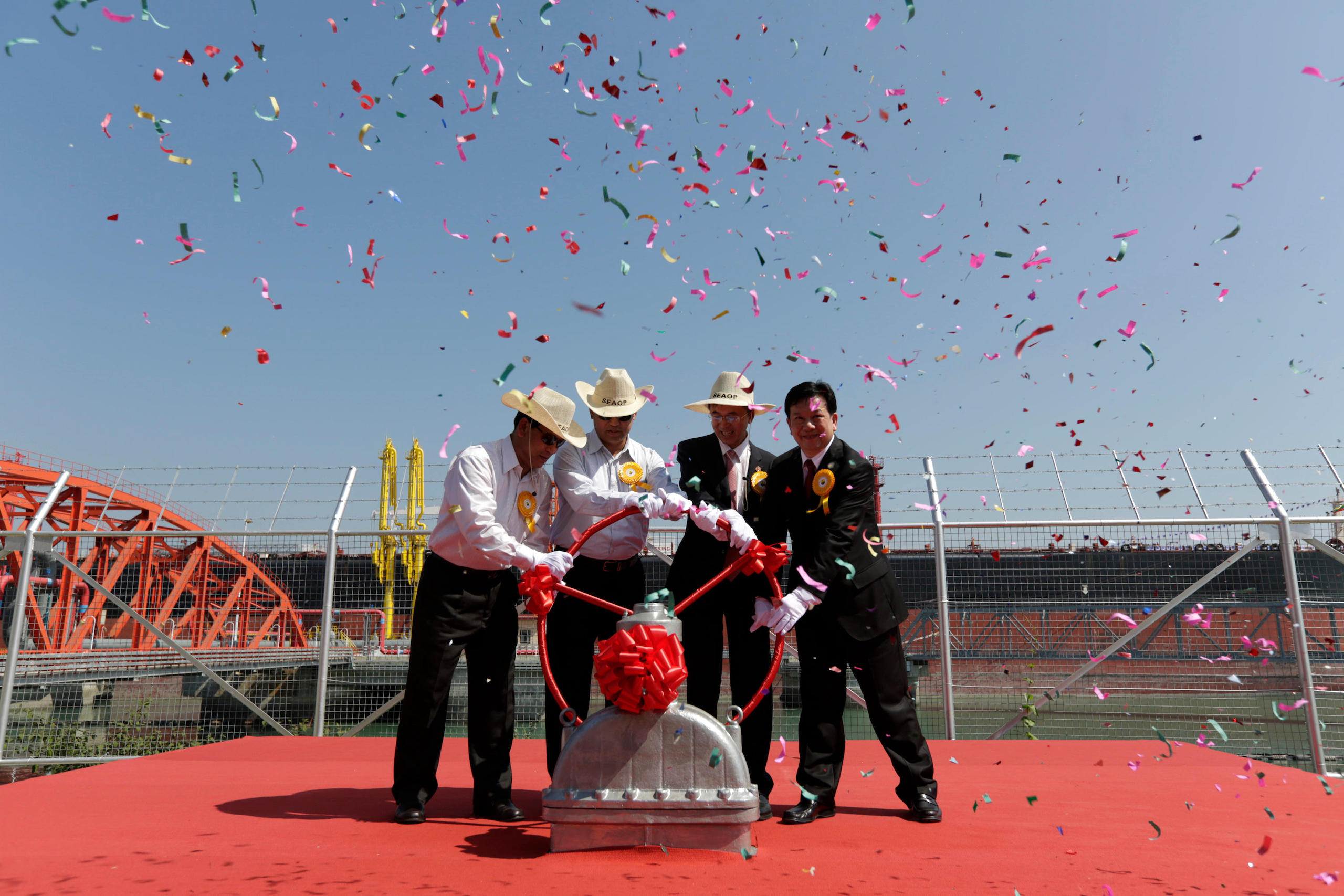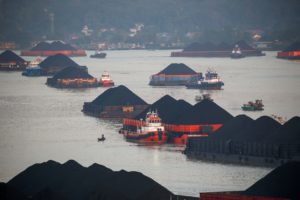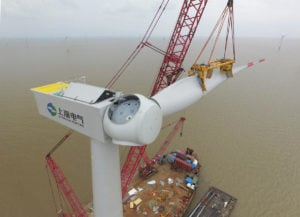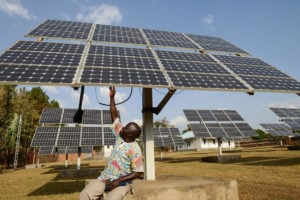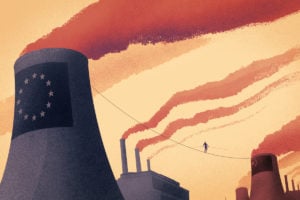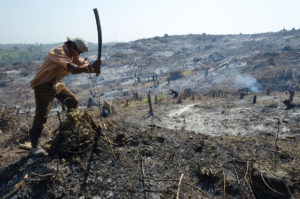China’s policy banks have been some of the largest energy sector financiers in the world. But in 2021 they provided no new development finance for energy projects overseas – the first year this century without any such finance.
This striking finding, from our recent update to China’s Global Energy Finance Database (CGEF), managed by the Boston University Global Development Policy Center, could represent a turning point in China’s involvement in overseas energy development.
The world faces a gaping investment gap in energy infrastructure, so questions on the future nature of China’s support in this area are of global importance.
President Xi Jinping pledged, in September last year, that China will increase support for low-carbon energy development overseas. Does the slump in lending from policy banks belie a shift towards support for greener energy technologies around the world?
From domestic to global
China has two main policy banks: the China Development Bank (CDB) and the Export-Import Bank of China (CHEXIM). They played a critical role in China’s domestic development before their expansion into overseas markets in the 2000s.
As the engine of China’s domestic growth over the past few decades, the CDB was initially capitalised in 1994 under the State Council to primarily assist with domestic infrastructure priorities. Since the 2008 global financial crisis, the CDB has transformed into one of the world’s largest overseas lenders as part of a strategy to diversify China’s foreign exchange reserves and strengthen its energy security.
Also capitalised in 1994, CHEXIM was tasked primarily with facilitating China’s foreign trade and foreign economic cooperation. To implement China’s Going Out strategy, and now its Belt and Road Initiative (BRI), the CDB and CHEXIM have coordinated with Chinese commercial banks and state insurance provider China Export and Credit Insurance Corporation (Sinosure). It has also worked with government ministries and companies to enable overseas projects in strategic areas and sectors. This model, dubbed the “coordinated credit space model”, has enabled the rapid take-off of China’s overseas development finance since 2008, particularly in the energy sector.
In fact, public lending from the CDB and CHEXIM has facilitated more power capacity additions than the public lending by 10 major multilateral development banks (MDBs) combined, including the World Bank and the International Finance Corporation.
Ingrained preferences
China’s policy banks have devoted most of their overseas lending in the electric power sector to coal-fired power generation and hydropower projects, reflecting domestic drivers from China’s own energy sector. Around the time of the global financial crisis, Chinese coal companies faced a slowdown in domestic electricity demand, leading to excess manufacturing capacity. Responding to demand from host countries with significant coal deposits, the growing need for electricity, and historical dependence on coal-fired power, China’s policy banks have lent US$31 billion for overseas coal power generation since 2000, CGEF data shows. This represents roughly 46 gigawatts (GW) of generating capacity, which has created significant opportunities for Chinese coal companies’ expansion overseas.
For hydropower, China’s policy banks also filled a large gap left by traditional donors and MDBs, which moved away from large dam projects at a time when developing countries were seeking to expand their own hydropower resources. China’s domestic hydropower industry also has decades of experience, lending a competitive advantage abroad. Our data shows that China’s policy banks have lent a total of $30 billion for hydropower projects overseas and an additional $2.5 billion for associated transmission infrastructure, altogether representing nearly 32 GW of generating capacity.
China’s overseas energy development finance has also flowed significantly to oil and gas exploration and extraction. Support for coal and hydropower make up the next largest destinations by energy type and have been relatively more stable than lending to oil and gas, which drove major peaks in lending in 2009 and 2016, of $45 billion and $38 billion, respectively.
Despite this history of significant energy sector support, China’s policy banks have decreased lending across all sectors in recent years, and Chinese overseas development finance has been declining since 2016. However, this is far from the end of the BRI: China’s outward engagement through foreign direct investment (FDI) remains strong, and commercial bank lending and contracting arrangements appear relatively stable, potentially due to Sinosure support. These other financing tools are likely to increasingly diversify the modes of China’s engagement overseas, relative to the previous dominance of China’s policy banks.
A prelude to greener investments?
Shifting channels of engagement could mean the types of energy China is enabling overseas are about to change – for the greener. China’s policy banks, have paused their lending, which had been so heavily oriented towards oil and gas extraction, and coal and hydropower generation. Pandemic-related borrowing constraints in host countries and restrictions on travel from China have made global deal-making challenging during the past two years.
Renewable energy is a key example of China’s overseas engagement that hasn’t historically involved much policy bank support. Already, China’s financing for overseas renewable energy development via FDI from individual Chinese companies has far exceeded policy bank lending.
Chinese companies, including specialised private companies such as Jinko Solar and large state-owned energy behemoths like Three Gorges and State Power Investment Corporation, have capitalised on renewable energy abroad. Measuring by associated generating capacity, Chinese companies have invested in nearly 12 GW of wind and solar capacity overseas, while policy banks have financed less than a gigawatt, independently and via FDI co-financing. Chinese companies invested in renewable energy projects through mergers and acquisitions, but greenfield investment in new projects has dominated since 2019.
Recent policy trends from China indicate support for overseas renewable energy development will continue to grow. Alongside the pledge to not build new coal power plants overseas, in September 2021, Xi Jinping also announced China would step up support for low-carbon energy overseas. More recently, at the end of March, several Chinese ministries issued guidance on greening the BRI that indicated strong support for wind and solar energy overseas, and further codified how this might be implemented. Various financial instruments were mentioned, including green bonds, leveraging private finance through public-private partnerships, as well as the need for cooperation with international partners. This high-level policy support is likely to stimulate further outbound investment from China’s renewable energy companies.
The lack of policy bank support in the past means Chinese renewable energy companies operating overseas are walking when they could be running
However, the lack of policy bank support in the past means Chinese renewable energy companies operating overseas are walking when they could be running. The policy banks not only favour large-scale loans that support massive centralised infrastructure (like coal or hydropower plants), but they also perceive risks in the bankability of smaller-scale, distributed renewable energy, and lack the experience to combat this perception. This has been true both at home and abroad.
After a hallmark low in 2021, China’s overseas energy development finance from its two policy banks is likely to rebound in a post-pandemic future. Research has shown that Chinese outbound policy bank finance tends to track with international currency reserves, which have recently begun to rebound substantially amid record trade surpluses.
To adhere to emerging green BRI principles and policies, China’s policy banks will have to explore ways to de-risk their engagement in renewable energy abroad, looking towards co-financing arrangements, insurance and guarantee instruments and distributing risk across a larger portfolio of projects. Of course, as countries around the world ratchet up their climate policy and work to create enabling environments for renewable energy, there is also room for BRI host countries to approach China’s policy banks to support renewable energy projects. Overcoming these challenges to match supply and demand will be key to the future of a green BRI.
